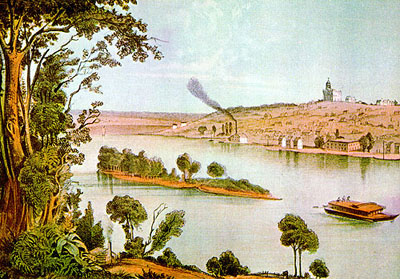While “The City of Joseph” is obviously meant as inspirational verse (especially considering its venue of publication: The Ensign), I don’t find it sentimental in anyway. In fact, the language and imagery and the way Larson binds them together in his poetic vision are quite striking, quite accomplished. In fact, I think seeing it as a tightly-crafted vision of a poet-seer is one way to make sense of the whole.
To begin with, it incorporates a sweeping sense of Mormon history (specifically) and natural history (in general), of human presence in the world and the West, of the Mormon movement from east to west as directed by the Morning and Evening Stars. It opens with what I read as an allusion to the First Vision, with Joseph and his influence on a chaotic world at the center, as represented by “light” and “whiteness” rippling outward from the “meadows” over “the places where Joseph came / To find his Zion” as moved by and “in the spell of prophecy,” beginning with the grove he knelt in that Spring morning, then moving to the city he planned and helped build, then to the Saints’ movement West, and finally to the valley where he knew they would establish themselves, could make their home and further influence the world “because,” as Margaret’s mother says, “we believe” in Joseph’s vision and words and in the “harvest” to come.
The idea that poetic seership is at work also arises in the repetition of “vision/s” (five times) and the repeated occurrence of “eyes,” “seen/saw,” and the passage of “time,” which, the poet confesses, “elides antiquity and the nearby years,” suppressing history in immediacy, something the poet strikes out to remedy by following Mormon history from “morning” to “evening” and by drawing together Earth’s glacial prehistory (ever-present in the “moraine[s]”) with a specific woman’s (archetypal) progeny, a group of “children” who stand “on a hill”—“a holy place”—and consider their ancestral path, an act that sounds very much like temple worship (”devotion”) to me.
In fact that may be another fruitful way to consider the poem: as an endowment-like ritual through which certain images and key-words are meant to bring us together as the family of God, meant to bind us together in “gray cirques of vision” that will eventually clarify in the Dawn of Christ’s return.


Pingback: Clinton F. Larson on Poetic Craft: The Value of Making Excursions into Experience